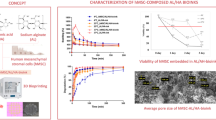Abstract
A depth filter perfusion system (DFPS) with polypropylene fibers had been demonstrated to support high density cultures of anchorage-independent hybridoma cells. The DFPS provides advantages of high surface-to-volume ratio of 450–600 cm2/cm3, low cost set-up, easy operation and scale-up. To test the feasibility of using DFPS for high density cultures of anchorage-dependent cells, Vero cells were cultivated in the DFPS. Gelatin coating on polypropylene fibers in the DFPS was necessary to promote cell attachment and growth. Dissolved oxygen (DO) concentrations could be controlled by sparging air into the reservoir vessel through a filter sparger. When DO concentration was controlled above 40% of air saturation in the DFPS with 40 μm pore size, the maximum cell concentration as estimated on specific lactate production rate, was 3.81×107 cells/ml of the total reactor volume. This viable cell concentration is approximately 18 times higher than that obtained in a T-flask batch culture. Taken together, the results obtained here showed the potential of DFPS for high-density cultures of anchorage-dependent cells.
Similar content being viewed by others
References
Altshuler GL, Dziewulski DM, Sowek JA and Belfort G (1986) Continuous hybridoma growth and monoclonal antibody production in hollow fiber reactor-separators. Biotechnol. Bioeng. 28: 646–658.
Berg GJ and Bödeker BGD (1988) Emplohing a ceramic matrix for the immobilization of mammalian cells in culture. In: Spier RE and Friffiths JB (eds.) Arimal Cell Biotechnology, Vol. 3, pp. 321–355. Academic Press, London.
Butler M (1988) A comparative review of microcarriers available for the growth of anchorage-dependent animal cells. In: Spier RE and Griffiths JB (eds.) Animal Cell Biotechnology, Vol. 3, pp. 283–303. Academic Press, London.
Chiou TW, Murakami S, Wang DIC and Wu WT (1991) A fiber-bed bioreactor for anchorage-dependent animal cell cultures: Part I. biorector design and operations. Biotechnol. Bioeng. 37: 755–761.
Croughan MS, Hamel JF and Wang DIC (1987) Hydrodynamic effects on animal cells grown in microcarrier cultures. Biotechnol. Bioeng. 29: 130–141.
Croughan MS, Hamel JF and Wang DIC (1988) Effects of microcarrier concentration on animal cell culture. Biotechnol. Bioeng. 32: 975–982.
Griffiths JB (1990) Animal cells — the breakthrough to a dominant technology. Cytotechnology 3: 109–116.
Griffiths JB (1988) Overview of cell culture systems and their scaleup. In: Spier RE and Griffiths JB (eds.) Animal Cell Biotechnology, Vol. 3, pp. 179–220. Academic Press, London.
Grinnel F (1978) Cellular adhesiveness and extracellular substrate. Int. Rev. Cytol. 53: 65–144.
Hu WS and Peshwa MV (1991) Animal cell bioreactors-recent advances and challenges to scale-up. The Canadian J. Chem. Eng. 69: 409–420.
Hu WS, Meier J and Wang DIC (1985) A mechanistic abalysis of the inoculum requirement for the cultivation of mammalian cells on microcarriers. Biotechnol. Bioeng. 27: 585–595.
Kim BS, Choi YH, Choi CY and Kim BG (1992) Mammalian cell cultivation on serum-coated microcarriers. Biotechnol. Techniques 6: 347–352.
Knight P (1989) Hollow fiber bioreactors for mammalian cell culture. Bio/Technol. 7: 459–461.
Maroudas NG (1972) Anchorage dependence: correlation between amount of growth and diameter of bead, for single cells grown on individual glass beads. Exp. Cell Res. 74: 337–342.
Murakami S, Chiou TW and Wang DIC (1991) A fiber-bed bioreactor for anchorage-dependent animal cell cultures: Part II. Scaleup potential. Biotechnol. Bioeng. 37: 762–769.
Oh DJ and Chang HN (1992) High density culture of hybridoma cells in a dual hollow fiber bioreactor. Biotechnol. Tech. 6: 77–82.
Oh DJ, Choi SK, Chang HN and Choe TB (1993) Production of monoclonal antibodies against human chorionic gonadotropin by hybridoma cultures in calcium alginate capsules. Cytotechnology 13: 41–49.
Oh DJ, Choi SK and Chang HN (1994) High-density continuous cultures of hybridoma cells in a depth filter perfusion system. Biotechnol. Bioeng. 44: 896–901.
Park S and Stephanopoulos G (1993) Packed bed Bioreactor with porous ceramic beads for animal cell culture. Biotechnol. Bioeng. 41: 25–34.
Phillips HA, Scharer JM, Bols NC and Moo-Young M (1992) Design and performance of a trickle-bed bioreactor with immobilized hybridoma cells. Cytotechnology 9: 29–40.
Reuveny S (1990) Microcarrier culture systems. In: Lubiniecki AS (ed.) Large-scale Mammalian Cell Culture Technology, pp. 271–341. Marcel Dekker Inc., New York.
Robert J, Côté J and Archanmbault J (1992) Surface immobilization of anchorage-dependent mammalian cells. Biotechnol. Bioeng. 39: 697–706.
Runstadler Jr, PW and Cernek SR (1988) Large-scale fluidized-bed, immobilized cultivation of animal cells at high densities. In: Spier RE and Griffiths JB (eds.) Animal Cell Biotechnology, Vol. 3, pp. 305–320. Academic Press, London.
Schon A and Wadso I (1986) Microcalorimetric measurements on tissue cells attached to microcarriers in stirred suspension. J. Biochem. Biophys. Methods. 13: 153–163.
Spier RE (1985) Monolayer growth systems: heterogeneous unit processes. In: Spier RE and Griffiths JB (eds.) Animal Cell Biotechnology, Vol. 1, pp. 243–263. Academic Press, London.
van Wezel AL (1967) Growth of cell-strains and primary cells on micro-carriers in homogeneous culture. Nature 216: 64–65.
van Wezel AL (1985) Monolayer growth systems: homogeneous unit processes. In: Spier RE and Griffiths JB (eds.) Animal Cell Biotechnology, Vol. 1, pp. 265–282. Academic Press, London.
Wang G, Zhang W, Jacklin C, Eppstein L and Freedman D (1993) High cell density perfusion culture of hybridoma cells for production of monoclonal antibodies in the celligen packed bed reactor. In: Kaminogawa S et al. (eds.), Animal Cell Technology: Basic & Applied Aspects, Vol. 5, pp. 463–469. Kluwer Academic Publishers, Dordrecht, the Netherlands.
Wang G, Zhang W, Jacklin C, Freedman D, Eppstein L and Kadouri A (1992) 9: 41–49.
Author information
Authors and Affiliations
Rights and permissions
About this article
Cite this article
Choi, S.K., Chang, H.N., Lee, G.M. et al. High cell density perfusion cultures of anchorage-dependent Vero cells in a depth filter perfusion system. Cytotechnology 17, 173–183 (1995). https://doi.org/10.1007/BF00749655
Received:
Accepted:
Issue Date:
DOI: https://doi.org/10.1007/BF00749655




